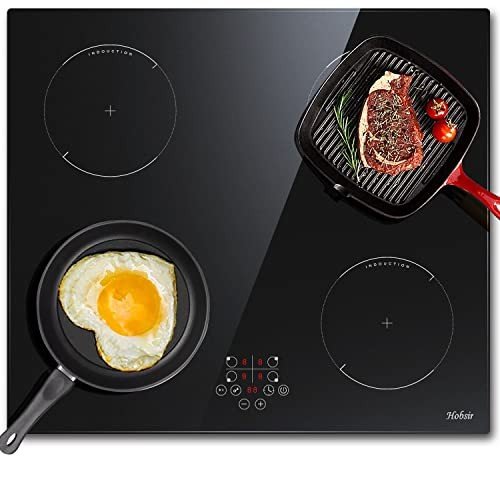Understanding Hobs and Ovens: The Essential Kitchen Appliances
In the world of kitchen devices, few products are as necessary as hobs and ovens. These appliances form the backbone of cooking activities, allowing individuals to produce whatever from easy meals to elaborate feasts. Understanding the distinctions, types, and performances of hobs and ovens can substantially enhance one's cooking experience. This article explores the intricacies of hobs and ovens, offering insights that deal with both amateur and seasoned cooks.
What Is a Hob?
A hob, typically described as a cooktop or range top, is the flat surface area on which pots and pans are positioned for cooking. Hobs are equipped with heating elements that generate the required heat for cooking food. They are available in various kinds, consisting of gas, electric, induction, and ceramic options. Each type provides unique advantages and downsides.
Types of Hobs
Gas Hobs:
- Heat Source: Natural gas or lp.
- Benefits: Instant heat control and responsiveness, chosen by lots of chefs for exact cooking.
- Disadvantages: Requires a gas connection and can be less energy-efficient.
Electric Hobs:
- Heat Source: Electric coils or smooth glass-ceramic surface areas.
- Benefits: Generally much easier to clean up, even heating, and extensively available.
- Drawbacks: Slower to warm up and cool off compared to gas.
Induction Hobs:
- Heat Source: Electromagnetic currents.
- Advantages: Quick heating, energy-efficient, and only heats the cookware, not the surrounding surface area.
- Drawbacks: Requires compatible cookware (ferrous products).
Ceramic Hobs:
- Heat Source: Electric and has a smooth glass surface.
- Advantages: Sleek look, simple to tidy, and even heating.
- Drawbacks: Can take longer to warm up and cool down.
What Is an Oven?
An oven is an enclosed device that cooks food by surrounding it with dry heat. Ovens can be standalone systems or integrated with hobs in a single device called a range. Ovens are flexible tools that can be used for baking, roasting, broiling, and more.
Types of Ovens
Traditional Ovens:
- Heat Source: Electric or gas.
- Advantages: Good for traditional baking and roasting.
- Downsides: Can have unequal heat distribution.
Convection Ovens:
- Heat Source: Electric or gas with a fan for distributing air.
- Benefits: More even cooking and much faster cooking times due to airflow.
- Drawbacks: Can be pricier and may need modifications in cooking times.
Microwave Ovens:
- Heat Source: Microwaves.
- Benefits: Quick cooking and reheating; terrific for thawing.
- Drawbacks: Can not brown or crisp food well.
Steam Ovens:
- Heat Source: Steam generation.
- Benefits: Retains nutrients and moisture in food, healthier cooking choice.
- Downsides: Longer cooking times and generally greater cost.
Key Differences Between Hobs and Ovens
While hobs and ovens serve the main function of cooking food, their performances and uses differ considerably. The following table summarizes these key distinctions:
| Feature | Hob | Oven |
|---|---|---|
| Cooking Method | Direct heat | Enclosed heat |
| Main Use | Boiling, sautéing, frying | Baking, roasting |
| Heat Source | Gas, electric, induction | Gas, electric, steam |
| Cooking Area | Flat surface area | Enclosed area |
| Cooking Time | Normally faster | Differs based on meal |
| Control & & Precision | Immediate and direct | Depend on settings and timers |
Benefits of Using Hobs and Ovens Together
Integrating the use of a hob and an oven can significantly enhance the cooking process. Here are some benefits:
- Versatility: Different types of food can be prepared simultaneously.
- Effectiveness: Using both permits various cooking methods, such as burning on the hob and baking in the oven.
- Time-Saving: Multi-tasking can substantially reduce general cooking time.
Upkeep and Care
To guarantee the longevity of hobs and ovens, routine maintenance is necessary. Here are some suggestions:
For Hobs:
- Clean spills immediately to prevent staining.
- Usage proper cleaners for particular products (e.g., ceramic cleaner for glass-ceramic hobs).
- Regularly check gas connections for leakages (for gas hobs).
For Ovens:
- Wipe down the interior after each use to avoid build-up.
- Usage self-cleaning functions if offered, or use oven cleaners for difficult spots.
- Regularly examine seals and gaskets for wear and tear (to preserve heat performance).
Frequently asked questions About Hobs and Ovens
1. What is the best kind of hob for a novice cook?
Response: A ceramic or electric hob is typically suggested for newbies due to alleviate of usage and cleaning.
2. Can I use any cookware on an induction hob?
Answer: No, induction hobs require pots and pans made from magnetic materials (e.g., cast iron or stainless-steel).
3. How often should I clean my oven?
Answer: It is advisable to clean your oven every couple of months, or more often if you use it frequently.
4. Is it much better to bake in a stove?
Response: Yes, convection ovens are frequently much better for baking as they provide even heat circulation. Nevertheless, some delicate dishes might gain from conventional ovens.
Understanding the performance and differences between hobs and ovens is important for any cooking enthusiast. Whether one chooses the immediate heat of a gas hob or the precision of an induction cooktop, each type offers unique benefits. Likewise, Sale Ovens Uk differ extensively in function, from traditional baking to steam cooking. By appreciating these home appliances' roles in food preparation, cooks can boost their cooking skills and simplify their kitchen activities.

